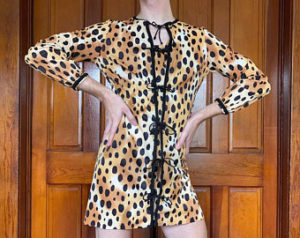(updated and expanded in April, 2021)
Boomer Generation folks, who are now turning sixty, for the most part, are still dawning the 60s fashions. Those fashions (hippie, straight, or surfer) were our fashions.
Table of Contents
Counter-Culture 60s Fashions
The current generation of teens are beginning to adopt and adapt some of those styles.
1960’s was a decade contained both- sophisticated designs and rather daring and revolting designs. This contributed to 60’s fashions being one of the most famous. Many of them still in fashion today.
It amazes me what some are calling the 60s fashions hippie styles. They are the norm of what we wore back then. The hippies wore less and washed it less. We took some pride in that.
Without a doubt, 60s fashions, like just about everything during those times, were novel and groundbreaking. That was then. Now, many of those same styles are back in vogue with various modifications.
Here are just a few of the unique 60s fashions.
Mini Skirts
If there is one style among all the 60s fashions that originally had a shock value and cultural statement, it was the mini skirt.
British designer Mary Quant is credited with being the first designer to come out with the mini skirt in 1964. She claimed, “A miniskirt was a way of rebelling.”
Goldie Hawn of “Laugh In” fame, wore a mini skirt on TV in 1967. This was the thrust the new style needed to take off. It soon became the signature, mod style of the 60s.
Leopard Print
The leopard print has been around since the 1930s, or even before. Tarzan movies, with Jane’s dress or lack there of, ignited an interest in the leopard and other animal prints on clothing.
It was seen as giving women particularly power, or at least the aura of power.
In the 1960s, hippies designed and wore a whole new world of leopard prints. Their prints were The hippie movement of the 1960s created a whole new world for animal print. Prints were unconventional and Bohemian. “Out there” was an often-used phrase to describe them. Unlike the sophisticated and elegant look of the 1950s, this novel style exemplified “The concept to be wild and free, like an ‘easy rider’.”
Knee-High Boots – Go Go Boots
You see boots everywhere nowadays. It has not always been that way. In the 1960s it was revolutionary when boots began to worn. The knee-high version became known as Go Go Boots after the Go Go Girls who wore them in the discotheques and clubs. They are now an integral component of most women’s wardrobes.
Before the Go Go Boots, women’s boots were used for only riding, walking, or protection from wet weather.
These knee-high boots were made of material that was up until then not seen as a option for designers. PVC (polyvinyl chloride) was flexible. It could be formed into boots and retain its brilliant shine in some of the most eye-catching colors. Being waterproof was a bonus.
Bell Bottoms
Bell Bottoms like Mini Skirts and Go Go Boots were proudly warn as symbols of the counter culture and Bohemian sentiment in the 60s.
Bell Bottoms date back hundreds of years. The only began to be noticed in recent history when sailors in the U.S. Navy began to wear them. They were a very practical. Rolling the bell bottoms up stay drier in deep water on the ship. They were worn daily as part of their uniform until 1977.
In 60s fashions Bell Bottoms were worn by both men and women.
The counter-culture generation discovered Bell Bottoms while shopping at Army Surplus stores. There they found Denim bell bottoms. The fashion employed other materials over time.
Music icons of the time like Sonny and Cher, Queen, The Jackson 5, Jimi Hendrix, and Bowie wore Bell Bottoms on and off the stage.
Military Style
British Army coats came into vogue when worn by mods and pop stars in the 1960s. They were preceded by the beatniks who wore ex-navy duffle coats. Hippies and counter-culture students dawned olive green combat jackets and great coats. Again it was the military surplus stores that influenced 60s fashions. In the beginning it was due to the bargain prices they could get in the military stores.
Even Jimi Hendrix fashion was influence by military uniforms. His Military Pelisse Tunic Jacket was one of his most famous fashion statements. He bought the jacket at I Was Lord Kitchener’s Valet.
The Pantsuit
As an in-your-face bold display of fashion as counter-culture statement, few designs could equal the new pantsuit and short mini skirts.
Some work offices and restaurants bared women from entering wearing pantsuits. Even on the floor of Congress pantsuits were forbidden.
During the 1960s pant suits for women became increasingly widespread. Designers such as Foale and Tuffin in London and Luba Marks in the United States were early promoters of trouser suits.[2][3] In 1966 Yves Saint-Laurent introduced his Le Smoking, an evening pantsuit for women that mimicked a man’s tuxedo
Pantsuits were worn to make a statement of equality and freedom. Now days, pantsuits are worn by the majority of women working in spaces that have been historical only for or dominated by men.
Ralph Lauren and Yves Saint Laurent both designed pantsuits that became very popular among wealthier women.
Here are just a few resources to help us remember how we dressed back then.
60s Fashions Videos:
Tie-dyes, mini skirts and much more, there were many fads and clothing designs that made up 60s fashion. The period is known as one of the most fashion conscious times in history. 60s fashions have, that began in that decade, have had a obvious influence on the fashions of today.
Check out these 60s Fashion Sites and smile.
The People History: 1960s Fashions Including Prices
Ballyhoo Vintage Clothing: Sixties Vintage Clothing







